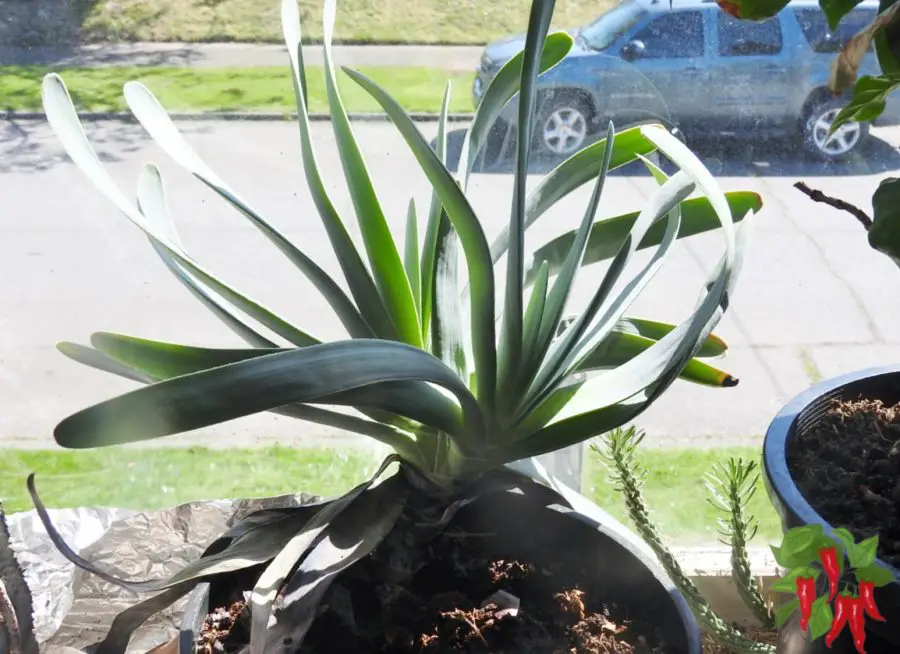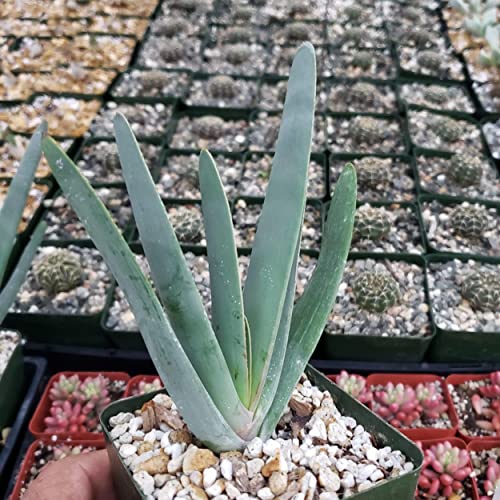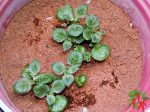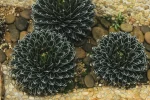This post contains affiliate links. If you buy something from one of our links we may earn a commission. Thanks

Is coco coir good for succulents? Find out in our engaging blog post, exploring soil recipes, coco coir benefits, and tips for a thriving succulent garden.
Using coco coir for succulents can be highly beneficial because it offers excellent water retention while also providing good aeration. It’s a sustainable and eco-friendly option that has a neutral pH level, making it compatible with most succulent varieties. Mix it with sand or perlite for optimal drainage.
Is Coco Coir Good For Succulents?
Are you considering whether coco coir is good for succulents, or if there’s a better soil mix out there?
In this blog post, we’ll be discussing the perfect balance of coco coir and perlite for your succulents, and why this combination might just be the ultimate soil mix.
We’ll also explore topics such as the benefits of worm castings, the difference between coco peat and coco coir, and tips for using perlite effectively.
So sit back, relax, and let’s help your succulents thrive with the right soil mix!
Succulents 101: Understanding Their Unique Needs
Succulents are a diverse group of plants known for their fleshy leaves and ability to store water.
They come in various shapes, sizes, and colors, making them a popular choice for both indoor and outdoor gardens.
While these hardy plants are relatively low-maintenance, they do have some specific growing requirements.
To keep them healthy and happy, it’s essential to provide them with ample sunlight, proper watering, and, most importantly, the right soil mix.
Well-Draining Soil: The Key to Succulent Health
The importance of well-draining soil for succulents cannot be overstated.
These plants are adapted to survive in arid environments, and their roots can be prone to rot if left in soggy, waterlogged soil.
A well-draining soil mix ensures that excess moisture can escape easily, preventing root rot and other moisture-related issues.
By using a soil mix that mimics their natural habitat, you’ll create the ideal growing conditions for your succulents to thrive.
Best Soil for Succulents: Coco Coir and Perlite
Are you ready to give your succulents the best possible foundation for growth? Let’s talk about the magic combo of coco coir and perlite!
These two materials, when mixed together, create the perfect environment for your succulents by striking the right balance of airiness, swift drainage, breathability, and moisture retention.
In the following sections, we’ll dive deeper into the world of coco coir and perlite, exploring their unique properties and why they make such a fantastic soil mix for your succulents.
So let’s get started and give your plants the best chance to thrive!
Coco Coir: The Wonder Ingredient for Succulents
Coco coir, derived from coconut husks, is an eco-friendly and sustainable material that has some fantastic properties for succulent soil mixes.
It’s naturally lightweight and airy, which encourages healthy root growth and prevents compaction.
Additionally, coco coir is excellent at retaining moisture without becoming waterlogged, ensuring that your succulents have access to the water they need without the risk of root rot.
Plus, it’s naturally resistant to mold and mildew, keeping your succulent environment clean and healthy.
Perlite: The Lightweight Soil Enhancer
Perlite, a natural volcanic glass, is another crucial ingredient for creating the perfect succulent soil mix.
When heated, perlite expands into lightweight, porous particles that improve soil aeration and drainage.
The tiny air pockets created by perlite ensure that your succulent roots have access to the oxygen they need to grow strong and healthy.
Meanwhile, the improved drainage helps prevent overwatering, a common issue that can lead to root rot and other problems for your succulents.
I like to use coarse and chunky perlite with my coco coir especially when growing succulents. Of course, you can use any grade and it will still work.
The Power of Coco Coir and Perlite Combined
When you combine coco coir and perlite, you create a soil mix that is truly greater than the sum of its parts.
The blend of these two materials provides the ideal balance of airiness, swift drainage, breathability, and moisture retention that succulents need to thrive.
This dynamic duo works together to prevent common succulent issues like root rot and encourages strong, healthy root growth.
So, by using a soil mix that includes both coco coir and perlite, you’re setting your succulents up for success and a long, happy life.
Succulent Soil Recipe: 50/50 Coco Perlite Mix
Now that we’ve explored the incredible benefits of coco coir and perlite for succulents, it’s time to get our hands dirty and create the perfect soil mix!
In this section, we’ll be sharing the tried-and-true 50/50 coco perlite mix that has helped countless succulent enthusiasts achieve healthy, thriving plants.
By following this simple recipe, you’ll be giving your succulents the ideal environment for optimum growth.
So, let’s dive into the details and prepare a fantastic soil mix that your succulents will love!
Canna Coco Is What I Use And Recommend
All coco coir is not created equally. Some cheaper brands contain high levels of salt making them unsuitable for growing plants.
Canna coco is prebuffered and very low in salts.
It also has consistently high quality and I have tried other brands but it still remains the best quality coco coir on the market.
It is available as coco bricks or loose and ready-to-use.
Coco has unique properties and requires a fertilizer made for coco for best results. Canna started the coco revolution and Coco A & B is still the best.
Ingredients and Proportions: The Perfect Blend
To create the ideal 50/50 coco perlite soil mix, you’ll need equal parts of both ingredients.
The simplicity of this recipe makes it easy to remember and ensures that your succulents receive the right balance of airiness, drainage, and moisture retention.
Start by measuring out equal volumes of coco coir and perlite, adjusting the quantities according to the number of plants or containers you’re working with.
Mixing and Preparing: Crafting Your Soil Mix
Once you have your ingredients measured, it’s time to mix them together.
Pour the coco coir and perlite into a large container or wheelbarrow, and use a trowel or your hands to combine them thoroughly.
Ensure that the materials are evenly distributed throughout the mix, creating a uniform blend that will provide consistent benefits to all of your succulents.
Once mixed, moisten the soil slightly with water to help settle it and make it easier to work with when potting your plants.
Timing is Everything: When to Use the 50/50 Mix
The beauty of the 50/50 coco perlite mix is that it’s suitable for a wide range of succulent types, from echeverias and sedums to cacti and aloes.
However, it’s essential to consider the specific needs of your plants when deciding whether to use this mix.
For most succulents, repotting is an excellent time to introduce the 50/50 mix, as it allows for a seamless transition to their new soil environment.
If you’re starting new plants from cuttings or offsets, the 50/50 mix can also help promote healthy root growth from the outset.
Ultimately, this versatile mix is a great choice for many succulents, but always keep the unique needs of your plants in mind.
Coco Peat vs Coco Coir
As you dive deeper into the world of succulent care, you might come across both coco peat and coco coir and wonder what sets them apart.
In this section, we’ll explore the differences between these two coconut-derived materials, examining their properties, benefits, and potential uses for your succulent garden.
By gaining a better understanding of coco peat and coco coir, you’ll be better equipped to choose the best option for your plants.
So, let’s unravel the mystery and discover the unique characteristics of these intriguing soil ingredients!
Unraveling the Coconut: Definitions and Extraction Processes
Coco peat and coco coir both originate from coconut husks, but they are different parts of the husk and have distinct properties.
Coco Peat: Also known as coir pith or coir dust, coco peat is the spongy, powdery material found between the fibers of the coconut husk.
It’s a byproduct of the coconut fiber extraction process and is often used as a soil amendment or in hydroponic systems due to its excellent water-holding capacity.
Coco Coir: Coco coir, on the other hand, is a mix made from mixing it with the long, coarser fibers extracted from the outer shell of the coconut husk.
These fibers are then processed into various forms, such as coco coir bricks, chips, or loose fibers, and used in gardening as a soil amendment or growing medium.
Comparing Coco Peat and Coco Coir: Properties and Benefits for Succulents
Coco Peat: Due to its sponge-like texture, coco peat can hold a significant amount of water, which can be both an advantage and a disadvantage for succulents.
While it does help retain moisture, it may also lead to overwatering and root rot if not mixed with other well-draining materials.
Coco Coir: As mentioned earlier, coco coir is an airy and lightweight material that provides excellent aeration and drainage for succulents.
It retains moisture without becoming waterlogged, making it more suitable for succulents than coco peat when used in the right proportions.
Making the Right Choice: Coco Peat vs Coco Coir
When deciding between coco peat and coco coir for your succulent garden, it’s essential to consider the specific needs of your plants.
While coco peat may be suitable for some moisture-loving plants, it may not be the best choice for succulents due to its high water-holding capacity.
Coco coir, with its excellent balance of aeration, drainage, and moisture retention, is generally a better option for succulents when combined with other well-draining materials like perlite.
Remember, the key is to create a soil mix that closely mimics your succulents’ natural habitat, and coco coir is often the more fitting choice for achieving this.
Perlite for Succulents: Striking the Right Balance
Perlite has undoubtedly become a popular ingredient for succulent soil mixes, but is it enough on its own?
In this section, we’ll delve into the role perlite plays in succulent care and explore its limitations when used as a standalone soil component.
We’ll also discuss how to strike the right balance with perlite to maintain proper moisture levels and avoid frequent watering.
So let’s get down to the nitty-gritty and discover how to make the most of perlite for your succulents!
Perlite Perks: Boosting Succulent Growth
Perlite offers several benefits for succulent growth, making it a popular addition to soil mixes.
First and foremost, its porous nature improves aeration and drainage, which are crucial for healthy succulent roots.
These air pockets allow oxygen to reach the roots, promoting stronger, more robust growth.
Additionally, perlite’s lightweight nature prevents soil compaction, ensuring that your succulents have plenty of room to grow and thrive.
Mixing it Up: Incorporating Perlite into Your Succulent Soil
While perlite offers many benefits for succulents, using it alone as a soil component might not provide adequate moisture retention.
To strike the right balance, it’s essential to mix perlite with other ingredients, such as coco coir or potting soil, tailored to your succulents’ needs.
A common and effective mix is the 50/50 blend of coco coir and perlite that we discussed earlier.
However, feel free to experiment with different proportions based on your specific plants and environmental conditions.
Choosing Wisely: Selecting the Right Perlite for Your Plants
When shopping for perlite, you’ll notice that it’s available in different grades, which refers to particle size.
For most succulents, medium-grade perlite is the best choice, as it offers the ideal balance of drainage and aeration without being too small or large.
It’s also essential to choose horticultural-grade perlite, which is specifically designed for use in gardening and is free of any harmful additives.
By selecting the right perlite for your succulents, you’ll be one step closer to creating a thriving, healthy garden.
Is Coco Peat Good for Cactus? Let’s Find Out!
You might be wondering whether coco peat, with its impressive water-holding capacity, could be a suitable option for your cacti.
In this section, we’ll dive into the world of cactus care and evaluate if coco peat has a place in their growing environment.
We’ll explore its properties, compare it to other soil amendments, and determine whether it’s a good fit for these desert-dwelling plants.
So, let’s get started and uncover the truth about coco peat and its compatibility with your beloved cacti!
Understanding Cacti: The Specific Needs of Cactus Plants
Cacti are unique plants with specific growing requirements, largely due to their desert origins.
They are adapted to survive in environments with infrequent rainfall, which means their roots need excellent drainage and aeration to prevent rot.
Additionally, cacti prefer soil that can hold some moisture without becoming waterlogged, as they still require water to thrive despite their drought-tolerant nature.
Weighing the Pros and Cons: Benefits and Drawbacks of Using Coco Peat for Cactus
Coco peat has some attractive qualities, such as its ability to retain moisture and provide aeration.
However, its high water-holding capacity may not make it the best choice for cacti, as it could lead to overwatering and root rot.
While coco peat can be used as part of a cactus soil mix, it should be combined with other well-draining materials to offset its moisture retention and ensure the mix dries out quickly between waterings.
Exploring Alternatives: Cactus-friendly Soil Mixes with Coco Coir
As an alternative to coco peat, consider using coco coir in your cactus soil mix. Coco coir provides excellent aeration and drainage while still retaining some moisture.
A possible cactus soil recipe might include a blend of coco coir, perlite, and sand or pumice to create a well-draining, airy mix that mimics the natural desert environment.
Experiment with different proportions to find the ideal mix for your specific cacti, and keep an eye on their growth and health to ensure the mix is meeting their needs.
Succulent Compost: Worm Castings, Nature’s Little Secret
If you’re looking for an all-natural way to boost your succulents’ growth and health, worm castings might just be the secret ingredient you need.
In this section, we’ll explore the wonders of worm castings and how they can benefit your succulent garden as a compost additive.
We’ll discuss their nutrient-rich composition and the advantages they offer in terms of soil structure and plant health.
So, let’s dig into the world of worm castings and discover how these tiny, nutrient-packed miracles can transform your succulents’ lives!
A Vital Addition: The Role of Worm Castings in Succulent Soil
Worm castings, which are essentially worm manure, play an essential role in enriching succulent soil with vital nutrients and improving soil structure.
These castings are the result of organic matter being broken down by earthworms, and they contain a range of beneficial elements that can boost your succulents’ overall health and well-being.
Nurturing Nature’s Way: Benefits of Worm Castings for Succulent Growth and Health
Nutrient-rich: Worm castings are packed with essential nutrients, such as nitrogen, phosphorus, and potassium, which are crucial for healthy plant growth.
These nutrients are readily available to your succulents, supporting stronger root systems, vibrant foliage, and more prolific blooms.
Improved soil structure: Worm castings also enhance soil structure by promoting aeration and drainage.
This helps to create an ideal environment for succulent roots, preventing issues such as root rot and suffocation.
Beneficial microbes: The presence of beneficial microbes in worm castings can help protect your succulents from harmful pathogens and diseases.
These microbes also aid in the breakdown of organic matter, making nutrients more accessible to your plants.
Working with Worm Castings: Incorporating Them into Your Soil Mix
To incorporate worm castings into your succulent soil mix, start by adding a small amount—around 10-20% of the total volume of the mix.
Combine the castings with your chosen soil blend, such as the 50/50 coco coir and perlite mix or a cactus-specific recipe.
Make sure to mix the ingredients thoroughly to distribute the worm castings evenly throughout the soil.
Keep an eye on your succulents’ growth and health after adding the worm castings, and adjust the proportions if needed.
Remember, worm castings are a potent, nutrient-rich addition, so a little goes a long way!
Is Coco Coir Good for Succulents? FAQ
Q: Is coco coir and perlite good for succulents?
A: Yes, coco coir and perlite make an excellent combination for succulents. This mix provides an ideal balance of drainage, aeration, and moisture retention, which are crucial for healthy succulent growth.
Q: Can you use coco coir as potting soil?
A: Coco coir can be used as a base for potting soil, but it is best to mix it with other ingredients, such as perlite, to create a well-draining and aerated growing medium. This ensures that the roots receive the oxygen they need and that excess water can drain away, preventing root rot.
Q: Will cactus grow in coco coir?
A: Cactus can grow in coco coir, but it’s essential to combine it with other well-draining materials, such as perlite, sand, or pumice, to create a soil mix that mimics their natural desert environment. This ensures that the cactus roots receive adequate aeration and drainage, which are crucial for healthy growth.
Q: Is potting soil better than coco coir?
A: Potting soil and coco coir both have their advantages, and the best choice depends on the type of plant and its specific growing requirements.
Coco coir offers excellent water retention and aeration, making it suitable for plants that require a well-draining and airy growing medium.
Potting soil, on the other hand, usually contains a mix of different materials, such as peat moss, compost, and perlite, providing a more balanced growing environment for a wider variety of plants.
It’s essential to choose the right growing medium based on your plants’ needs to ensure their health and growth.
Coco Coir for Succulents FAQs
Coco coir is becoming increasingly popular as a potting mix component, especially for succulents.
You may have heard of its benefits but still have questions about its suitability for your plants.
Let’s get those questions answered, so you can make an informed decision about using coco coir for your succulents.
Q: Can coco coir replace soil for succulents?
A: Yes, coco coir can replace soil but it’s usually better when mixed with other components like sand or perlite for better drainage.
Q: Does coco coir retain too much water for succulents?
A: While coco coir has good water retention, it also provides adequate aeration. Mixing it with sand or perlite can help prevent overwatering.
Q: Is coco coir pH-neutral?
A: Coco coir generally has a neutral to slightly acidic pH, which is well-suited for most succulents.
Q: Is Coco Coir sustainable?
A: Yes, coco coir is considered a sustainable and eco-friendly alternative to peat moss, as it is made from the husks of coconuts, a renewable resource.
Is Coco Coir Good for Succulents? Final Thoughts
As we wrap up our exploration of succulent care and the role of various soil components like coco coir, perlite, and worm castings, we hope you’ve gained valuable insights into creating the perfect environment for your succulents to flourish.
By understanding the unique needs of these stunning plants and choosing the right soil amendments, you can set your succulents on a path toward healthy, vibrant growth.
So, armed with this newfound knowledge, go forth and nurture your succulent garden with confidence and care, knowing that you’re providing the best possible foundation for your plants to thrive!
A Winning Combination: Recapping the Benefits of Using Coco Coir and Perlite for Succulents
In our journey through succulent care, we’ve discovered the numerous advantages of using a coco coir and perlite mix.
This dynamic duo offers a well-balanced soil that provides excellent drainage, aeration, and moisture retention, all of which are crucial for healthy succulent growth.
By combining these two ingredients, you’re setting the stage for a thriving succulent garden that showcases vibrant foliage and stunning blooms.
Dare to Experiment: Finding Your Perfect Succulent Soil Recipe
While we’ve provided some tried-and-true soil recipes, we encourage you to experiment and tailor your soil mix to the specific needs of your succulents and environmental conditions.
Don’t be afraid to adjust the proportions of coco coir, perlite, and other amendments like worm castings or sand to create the ideal growing environment for your plants.
Observe your succulents’ growth and health and fine-tune your soil mix as needed. Remember, the key to a thriving succulent garden lies in finding the perfect balance that suits your plants’ unique requirements.
Read More: 10 Benefits Of Succulent Plants Indoors Plus They’re Easy To Grow



















